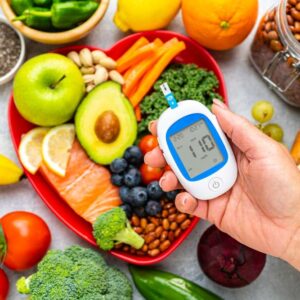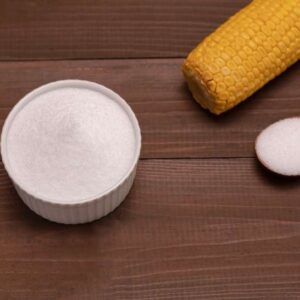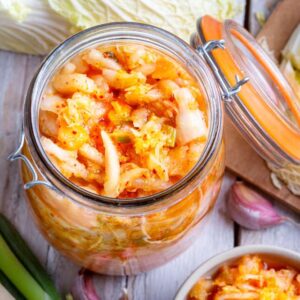GMO Corn Snuck into Your Lunch
A couple weeks ago, word hit the street that Panda Express, a popular fast-food chain, is replacing eggs with corn in their fried rice.
Here’s a link to a video on the story.
Think about this next time you’re power-walking through the mall and someone offers you a sample of their chicken while you stride through the food court. Just keep on going before their succulent sample lures you into a nasty surprise.
They’re replacing a solid source of protein and healthy fats with lousy corn. And you can bet it’s genetically modified organism (GMO) corn.
The reason they gave for the switch?
A nationwide egg shortage due to bird flu.
Now… let’s put the bird flu stuff aside and focus on the nutritional aspect of this story. (I know we’ve got some readers ready to fire away some articles about how it’s a government conspiracy… as if the government’s competent enough to construct such plots… Well, maybe some puppet masters are, but anyway, I’m trying to stick to health here!)
It’s another example of a company choosing to save money over using quality ingredients. Now, I don’t have a problem with that. If consumers demand a cheap product, they can expect to get just that. Imagine the uproar if Panda kept using eggs but bumped their prices up instead.
I buy my eggs from a local farm. No shortage there. No animals stuffed with grains either.
But every now and then, I succumb to the convenience of eating out for lunch. Here’s how a recent conversation went between me and a co-worker when he saw me eating some Hunan beef:
Co-worker: “That stuff is loaded with sugar.”
Me: “*** **** it!”
Somewhere, buried in my subconscious, I knew. But my taste buds outvoted my brain (a common occurrence with most other parts of me too).
Think of it this way:
Whatever cheap-ish dish you grab for lunch has to go through just about all of the following:
- Ingredients purchased in bulk (that are available year-round).
- Able to withstand a cross-country or overseas journey without spoiling.
- Cheap to purchase.
- Easy to assemble.
- Be waiting, hot and fresh, within a few minutes of you ordering.
- Make a profit for every link in the supply chain.
- Taste good enough for you to want more.
… Do you really expect the convenient fare you get at a chain store to fulfill all the requirements above and STILL be healthy?
Don’t count on it. Because in lieu of the higher prices required for better-quality ingredients, purveyors of convenient food have a couple tricks up their sleeve:
- Excitotoxins — these chemicals fire up the pleasure centers in your brain. MSG is probably the most commonly known. Others are aspartame and any other noncalorie sweetener in diet drinks. But excitotoxins can show up in the sauces of main dishes as well.
- Processed carbohydrates, like sugar — again, I have to hate on sauces here. They’re the perfect place to sneak in spoonfuls of sugar to ensure any meat dish you order tastes delectable. It’s the real reason spice combinations are top-secret.
You’re especially in danger at a restaurant because you can’t readily examine the ingredients list.
So if lifelong health and staying trim is something you want for yourself, make the majority of your meals at home.
The problem with this is even grocery stores and food companies can fool you with the harmful (but tasty!) ingredients they sneak into products. Or spray on products. Or feed the animals that eventually create the products.
Does this concern you? And would you be interested in a handy guide you can take with you to the grocery store so you can tell exactly which foods are healthy and which are merely pretending to be?
With this guide, you could scan any label and instantly pick out the hidden, potentially harmful ingredients. Even the ones that sound healthy (food companies do this to fool you).
If you’re interested in a guide like that, write to us at livingwelldaily@lfb.org. We’ve got something in the works, but we’ll move forward on the project only if there’s enough reader response.
Until then, make your own food as much as possible. At least you’ll (sort of) know what’s going into it.

Nate Rifkin
Underground Health Researcher
Written By Nate Rifkin
Nate Rifkin is an obsessed health and mind-power researcher and author. To hear more from Nate, sign up to receive Living Well Daily for free, here.
View More Free Articles
Stop Obsessing Over Diet Trends
Can we stop with the endless diet debates already? Every other week there’s a new headline shouting about which diet is best for weight loss, heart health, or diabetes. Paleo, keto, low-carb, high-protein… it’s exhausting. And now, a new meta-analysis is out comparing the Mediterranean diet, the DASH diet, and something called AHEI (that’s “Alternative...
A New Reason to Ditch Processed Junk
If you’ve ever walked the inside aisles of your local grocery store and thought, “This is all just junk,” your instincts were spot on. A new study published in the journal Thorax just added another red flag to the list of dangers linked to ultra-processed food—a 41 percent higher risk of lung cancer. That’s right....
When Being Winded on Stairs Is Serious (And When It Isn’t)
I had an athlete visit me recently because he experienced shortness of breath while climbing stairs. He is in great shape, so he was worried about what it might mean. “Doc,” he said, “I run five miles three times a week. Why am I huffing and puffing after two flights of stairs?” His concern is...
Study EXPOSES Hidden Danger Lurking in Your Car
We think of our homes and cars as safe havens. But according to a startling new study, they may be flooding your lungs with microscopic plastic particles—every single day. Researchers in France recently found that adults inhale an average of 68,000 microplastic particles daily from indoor air alone. To put that in perspective, that’s about...
Mailbag: Is Modern Food Making You Snore?
“What can cause snoring, and is there a way to correct this issue?” —Seeking Silence Hi Seeking, Snoring happens when the soft tissues in your throat relax and vibrate as air passes through during sleep. While several factors can cause snoring—from sleep position to nasal congestion—I want to share one trigger that might surprise you....
Simple Food Swap SLASHES Dementia Risk 28%
Let’s be honest… who would jump at the chance to cut their dementia risk by 28 percent. And no, you don’t need to run marathons, survive on broccoli, or learn to play the zither (whatever that is) to make it happen. All it takes is one easy swap—something that’s probably already in your refrigerator. Researchers...
This SMART Floss Exposes Hidden Health Danger
Scientists have created dental floss that doesn’t just clean between your teeth—it also tracks your stress while you’re flossing. Now, I know what you’re thinking… “Great—now even flossing is going to stress me out by telling me how stressed I am.” But this fascinating new tool from Tufts University could be a game-changer for understanding...
Is This "Safe" Sweetener Damaging Your Brain?
The headlines are alarming… “Popular Sugar Substitute Linked to Brain Cell Damage” and “Erythritol Could Damage Critical Brain Barrier” are just two of the dozens I’ve spotted recently. But before you toss every sugar-free product in your pantry, let’s take a closer look at what this study actually shows—and what it doesn’t. The latest research...
This Summer Threat Could SPIKE Your Blood Sugar
Picture this… It’s another scorching hot summer day. You crank up the air conditioning while watching the weather forecast, which predicts yet another “record-breaking” heat wave. It’s starting to feel like just another miserably uncomfortable summer. But what you might not realize is that—if you have diabetes—those rising temps could do far more damage to...
Move Over Yogurt—5 Foods That Pack MORE Probiotics
Let’s talk about your gut. The microbiome is the collection of trillions of bacteria and other tiny organisms that live in and on your body—especially in your gut—and help keep you healthy. I’ve written often about how vital it is to maintain a healthy microbiome. And you might have dutifully added yogurt to your shopping...









